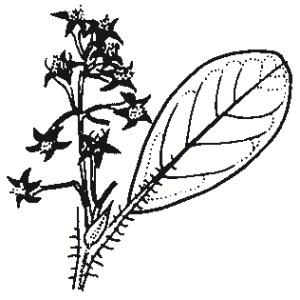Family:
Rhamnaceae
Pomaderris velutina
Velvet Pomaderris
Other Names:
First Nations Name(s):

Name Origin:
Pomaderris — from Greek poma, lid, and derris, skin/ fur/ leather covering, alluding to membranous capsule covering, in some species.
Regional Subspecies:
Occurrence:
Regional:
Noted in the higher rainfall areas, particularly districts in the Riverina Highlands.
Australia:
Vic, NSW. Some also in Qld.
Habitat:
Most Pomaderris species occur along gullies and streams, in open forest and woodland.
Habit:
Shrubs 1-3 m high, many with hairy stems.
Site Preference:
Generally semi-shade/sheltered situations in moderately well-drained soils. Most tolerate moderate frost.
Flowering:
Spring.
Seed Collection:
Early to late summer. Monitor closely as seeds shed 3-14 days after maturity.
Propagation:
From seed, which may require scarification, or cuttings of firm young growth. Pour boiling water over seeds and soak before sowing, or apply dry heat at 1500C for 10 minutes.
VALUES:
Land Protection:
Useful for stabilising soils along streams and gullies where they occur.
Wildlife:
Hazel Pomaderris — trunks habitat for lichens. Hosts larvae of Jewell butterflies.
Ornamental:
Pomaderris (P. angustifolia) has few ornamental qualities. Hazel Pomaderris (P. aspera) is excellent for copses and beneath established trees. Woolly Pomaderris (P. lanigera) is highly ornamental. Pomaderris (P. eriocephala) and Narrow-leaf Pomaderris (P. phylicifolia var. phylicifolia) are decorative.
